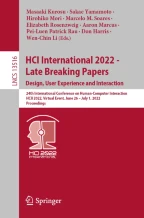
To be more competitive in the mobile applications market, designing the mobile applications that users tend to use is of great significance. Usability plays an indispensable role in affecting usage intention. Therefore, mobile applications usability evaluation is vital in the designing process. This report is a systematic review of mobile applications usability evaluation by bibliometric analysis. We used Scopus and Web of Science to search documents. Trend analysis, co-occurrence keywords analysis, co-authorship analysis, co-citation analysis, leading table, and word cloud were conducted to do the systematic review. Research related to this topic has become popular in recent years. Mobile applications usability can be influenced by the user, environment, task/activity, and technology, evaluated by different usability attributes from different perspectives, and influence technology acceptance, adoption, retention, etc. [7] Lab experiments and field study were frequently used mobile applications usability evaluation methods [5–7]. The subjective questionnaire, such as SUS (System Usability Scale) [12] and USE (Usefulness, Satisfaction, Ease of use) questionnaire [17], were frequently applied to investigate participants’ subjective feelings after using mobile applications. Another subjective method is the heuristic evaluation [15]. Then, objective metrics, such as task completion time, task completion rate, time spent on the first use, and so on, were frequently used in mobile applications usability evaluation [5, 6, 35]. In future work, we can find papers from more databases and include more papers in the literature review. Next, differences in contexts, users, and goals, should be considered in mobile applications usability evaluation. Finally, security is a prominent factor in mobile applications development.
This is a preview of subscription content, log in via an institution to check access.